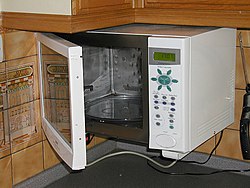Let me share tips on making a triceratops mask. We made this for my son during a school’s book fair parade in 2008. It won the award of “Best Mask” for that event. I hope you’d find this useful, too.
Materials needed:
- Box board
- Canvass cloth
- Rubber cement
- White glue
- Water
- Facial tissues
- String
- Alligator clips
- 1-inch size paintbrush
- Foam
- Soldering iron
- Old baseball cap
- Scissors
- Paints (yellow and green)
- Plastic bottle

Cut a piece of box board in the shape a dinosaur head. Draw the parts of the face and make holes for the eyes.

Cut a piece of cheesecloth or canvass with the same shape as the dinosaur head.

Glue the cloth and the cardboard together. We used rubber
cement for this.

When it has dried up, cut out the excess cloth.

Use clips and a string to hold it at the back to form it into a rounded shape just below the cheeks of the dinosaur face.

Mix 1 part glue and 2 parts water in a
bowl to make a thin glue mixture.
Lay a layer
facial tissues on the front part of the mask then brush glue mixture on it lightly, just enough to make it cling to the mask base. You will notice small wrinkles will form. Do this until the
tissue paper covers the whole mask. Make a ring using tissue paper moistened with glue mixture and form as the base of the horn. Make two layers, then let it dry.

Repeat the process for another two more layers of tissue. Let it dry.

While waiting for the tissue
papers to dry, cut out some foam pieces to form into horns.

Use a heated soldering iron side to round the edges of the horn. Use this to put line details, too. It will give a crude and natural texture.

Place another layer of tissue then brush with glue on the mask.

While the tissue is still wet, get a tin bottle cap. Deform it slightly and press it on the mask repeatedly until you get a reptile skin pattern. Let it dry.

Paint it using canned
spray paints of green. brown, and yellow or any color you wish, until you achieve the desired color you want.

Paint the horns with a
single light coat of yellow or light brown, too.

Once the paint has dried, glue the horns to the mask using rubber cement. Cut out small triangles to resemble the crown of the dinosaur. Make shades using a pencil to add dimension.

Cut out a piece at the bottom of a plastic soda bottle and place them as eye covers.

Get a
baseball cap and remove the shade part. Attach this at the back of the mask. Measure it well to the wearer’s head so that his eyes can still peek through the mask’s eye holes.

Now the dinosaur mask is complete.




































